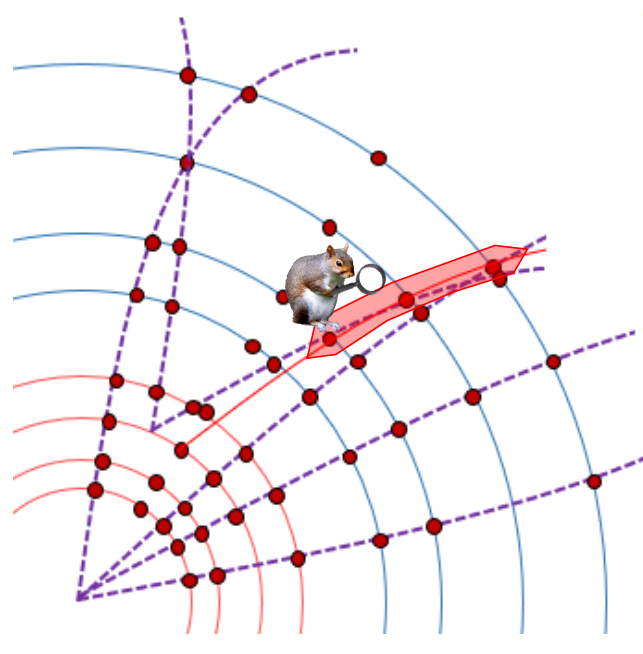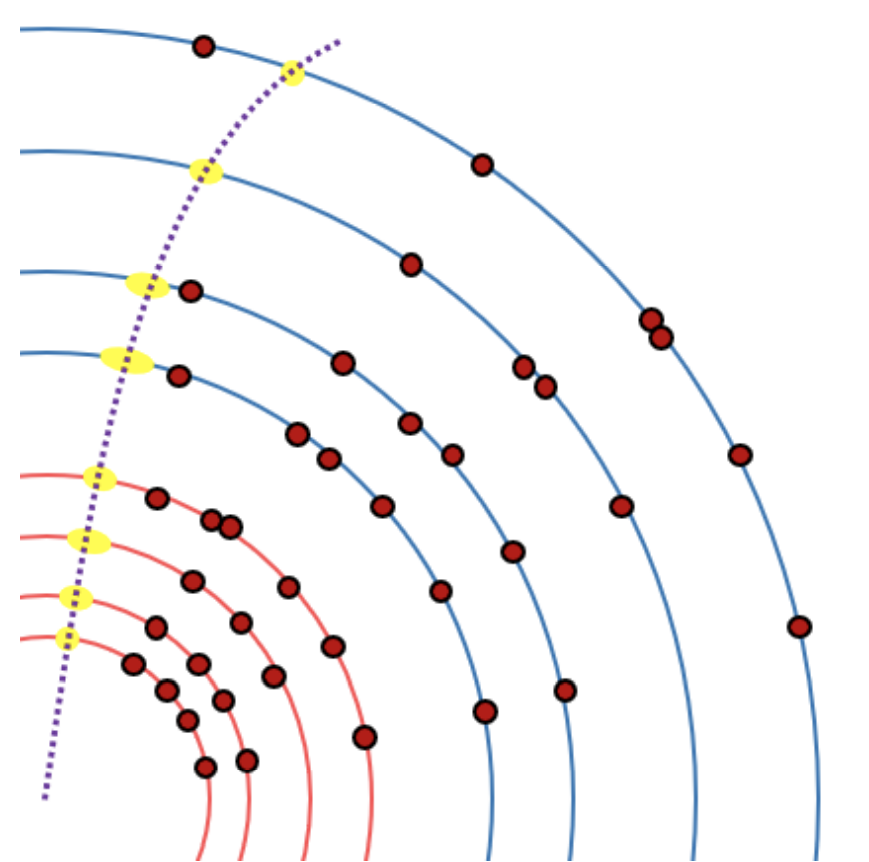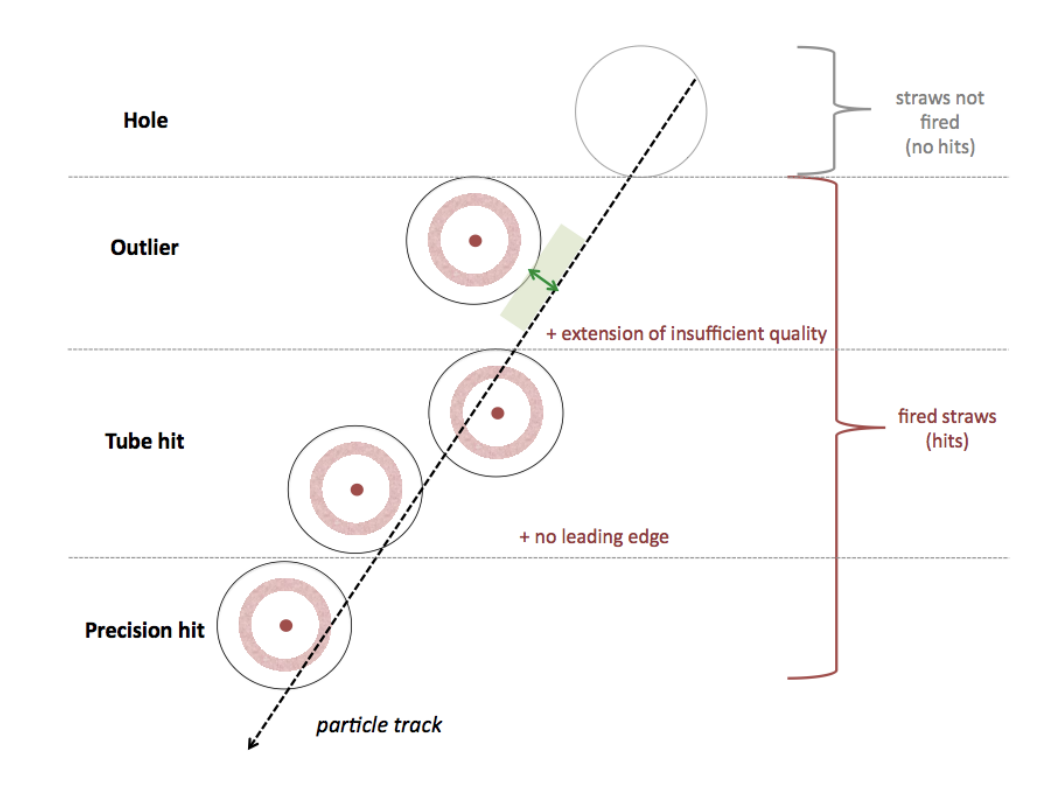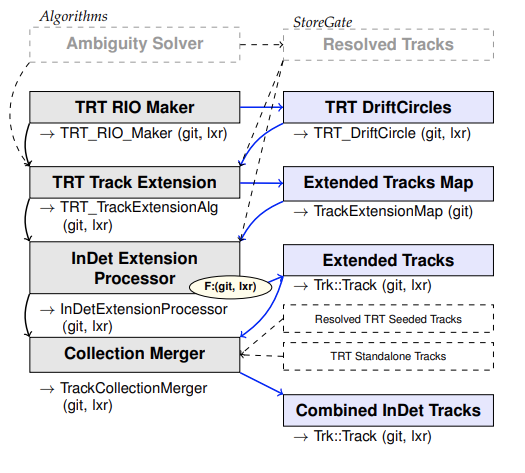After the track finding stage, to resolve overlaps between track candidates and reject incorrect combinations of unrelated clusters (“fake tracks”), a dedicated ambiguity resolution step is performed, which scores track candidates based on a range of quality criteria and rejects lower-quality candidates sharing a large number of associated hits with higher-quality ones. Shared hits are often an indicator of fakes or low quality tracks.
A limited number of shared hits is permitted to retain high performance in dense topologies such as cores of high-energy jets, where the separation between charged particles is expected to reach below the magnitude of the sensor pitch. The estimated cluster positions and their uncertainties are updated using a neural network based algorithm, and a probability is assigned for one, two, or at least three charged particles to have contributed to the cluster. Clusters judged to consist of more than one charged particle crossing are split among track candidates, with position and uncertainty estimates for each particle crossing provided by the algorithm.
The refined and purified track candidates resulting from the ambiguity resolution are then re-fit using a global χ2 method to obtain the final, high-precision track parameter estimate. This accounts for errors on the measurements and expected uncertainties (e.g multiple scattering etc.)
This process is now largely done in AmbiguityProcessorBase. (git,lxr).
Finally, an extension into the TRT subdetector is attempted. Similarly to the process begun in the SiSPTrackFinder, a road search is performed into the TRT volume starting from the position estimation of the track candidate. Again a Kalman filter is used to build candiate extensions. Then the TRT hits are added to the tracks and the whole tracks are again refit with the global χ2 fitter if the extension is successful. This is in order to profit from additional measurements on the track, in particular for momentum resolution and particle identification.
Si-Only tracks are kept if the fit worsens with the addition of the TRT hits. A track extension may be rejected if there are too many TRT outliers, where the track passes outside the TRT straw tube or a TRT hit detrimentally impacts the χ2 of the track candidate, or if more than 50% of the TRT hits are tube hits which have no leading edge or the track does not pass through the drift circle within the straw tube, as seen below:
This process is done in several algorithms as shown below, where the extension is performed largely in TRT_TrackExtensionAlg (git,lxr) and the full track refit is done in InDetExtensionProcessor. (git,lxr)
In the following sections we look at the outside-in tracking reconstruction pass.




